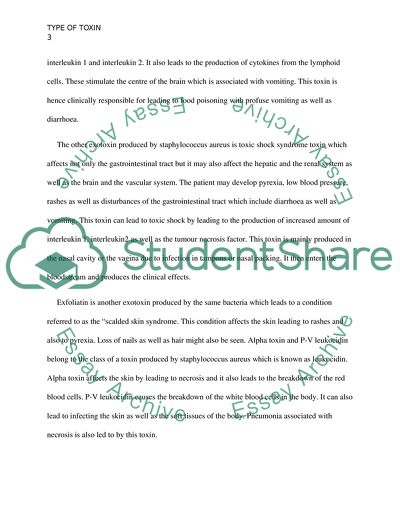Cite this document
(Toxins and Human Diseases Assignment Example | Topics and Well Written Essays - 1500 words, n.d.)
Toxins and Human Diseases Assignment Example | Topics and Well Written Essays - 1500 words. https://studentshare.org/health-sciences-medicine/1741187-the-type-of-toxin-determines-the-characteristics-of-the-disease
Toxins and Human Diseases Assignment Example | Topics and Well Written Essays - 1500 words. https://studentshare.org/health-sciences-medicine/1741187-the-type-of-toxin-determines-the-characteristics-of-the-disease
(Toxins and Human Diseases Assignment Example | Topics and Well Written Essays - 1500 Words)
Toxins and Human Diseases Assignment Example | Topics and Well Written Essays - 1500 Words. https://studentshare.org/health-sciences-medicine/1741187-the-type-of-toxin-determines-the-characteristics-of-the-disease.
Toxins and Human Diseases Assignment Example | Topics and Well Written Essays - 1500 Words. https://studentshare.org/health-sciences-medicine/1741187-the-type-of-toxin-determines-the-characteristics-of-the-disease.
“Toxins and Human Diseases Assignment Example | Topics and Well Written Essays - 1500 Words”. https://studentshare.org/health-sciences-medicine/1741187-the-type-of-toxin-determines-the-characteristics-of-the-disease.


